Shenandoah Elementary School
Shenandoah Elementary School in Los Angeles
Introduction
The year is 1948. Elementary school was a shock. Leaving mom and going to a strange place? What was really strange is that my kindergarten teacher was black. In those days were would say Negro which was acceptable and polite.
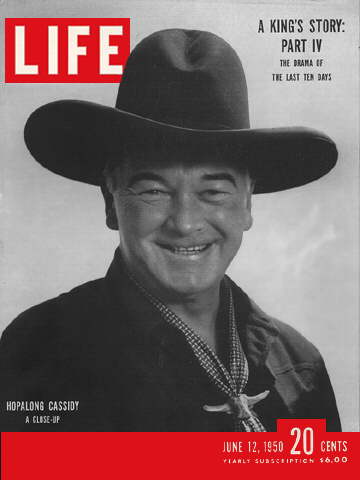
My hero! The good guy!
Life the day I first went to school! The Shenandoah School was a large and old building built in the 20's I would guess my the sheer nature of the architecture. Walls were two foot think and no need for air conditioning as it took for ever to heat the place up. It was two stories and the stairs were like a grand staircase. We all wanted to be in the sixth grade because THEY were on the second floor.
We has a lot of bungalows as I was part of the baby boom. These wooden frames buildings were just fine and enabled a lot of chasing and hiding to do on... A sport in those days.
The play yard was huge and it had four baseball diamonds on it. We play kickball and occasionally softball. Hopscotch was played all over the campus. It was all blacktop so we needed our Keds or PF Flyers. Keds versus PF Flyers was pretty serious debating material in those days!
At our school, decisions were made by going " eeny-meeny-miney-mo." " Race issue" meant arguing about who ran the fastest. Money issues were handled by whoever was the banker in " Monopoly." Lunch was 30 cents so robbery was no a serious campus crime.
The worst thing you could catch from the opposite sex was cooties. Kathleen Wallace was the girl bully and in fact chased boys into the boys room to beat them up!
It was unbelievable that dodge ball or red-rover wasn't an Olympic event. Having a weapon in school meant being caught with a slingshot or pea shooter.
Were is Patricia Cooper and Dane Perkins and Joel Prell?
The school has changed over time. It was about 99% white folks when I was there in the early 1950s and now it is White students: 1.2%, Black students: 23.5%, and Hispanic students: 72.5%.
My Kindergarten Teacher Was Black, OMG!
First day in Kindergarten and I met my teacher. She was black! But you know what, I didn't know that until years later when I thought about it. Her name escapes my but she taught me how to count in Spanish and I can still do that today. I remember she consoled many of us that first day as we left the safety of home and made us feel safe and welcome in this strange environment.
My memory of the first day at school came from a photo I recently found with me sitting on this ladies lap being held tightly (I was probably wanting to bolt out the door and go home).
The long days of Kindergarten on 1949 are still remembered because of the high walls around the playground, the great sandbox, and the red berry trees adjacent to the huge cement building.
Shenandoah Elementary School is still in place and going strong.
Designer Of Cars
It was the 1950s and we all did it! Guys designed cars. Fins were in! The higher and longer the better. What was my favorite car... The Packard Caribbean.
The Packard Caribbean Convertible was produced from 1955 to 1957. The data with 2 different engines from 5.8 to 6.1 liters and powers from 260hp to 310hp, are below. 276 units were produced. Curious what this vehicle looks like ? Need to see some pictures?

This was my starting point for car designs. The Packard was fabolous!
The man who I went to Hawaii with, Riley, had one of these puppies and it was indeed a car! It looked like the one below and I remember him coming to the house to show it off and he drove it up over the curb and the darned thing adjusted the suspension so it was flat. Talk about a smooth riding car, it was like riding in the Queen Mary.
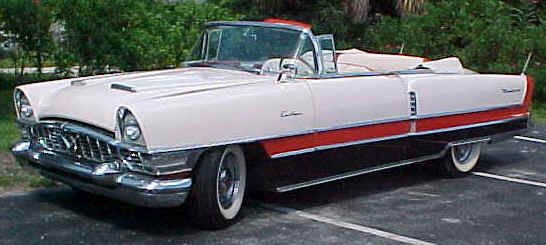
A true land-yacht!
The car was a magnificent piece of work and made the Cadillac, Lincoln and Imperial look like VW beetles!

I loved the sleek and straight lines of this vehicle
So, Where Did i Get My Ideas From?

1938 Buick

1941 Chrysler Thunderbolt: Before WWII and just before Paul was born!
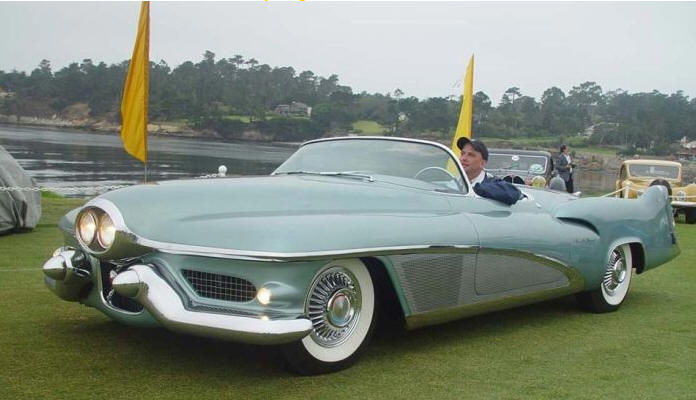
1951 Buick LeSabre

1953 Buick Wildcat

Dodge 1954 Firearrow
My First Day In Kindergarten

I was scared to death... Not by school but by my teacher! I had never seen a black person before.. or if I did I did not pay any attention! Remember in those days (1950) we did not have television, cars were not plentiful so folks did not get around a lot.
There she was, as big as life and black! By the end of the first hour, she was no longer black but she was MY teacher. I have a picture to this day with me and Patty Cooper sitting on her lap at kindergarten graduation and me planting a big kiss on MY teacher.
Now I made it through Kindergarten and he is what we looked like. This is a replica as all my family pictures were destroyed in an accident in 1970... But this is pretty close!
Kathleen Wallace And The Boys Bathroom

She was mean
Every school yard had a bully, right! Mine was unique, we had Kathleen Wallace, biggest bully in the school! For some strange reason she was always my friend... perhaps because I was a geek before there were geeks.
I do remember the day Mike Levine said something on the kickball court and Kathleen took after him in a flash. Mike thought he was home free because he headed for the head... in those days it was called the boys room. Stop Kathleen, nope! She went through those doors like knife through butter.
Boys came streaming to the head zipping up screaming and yelling like a gaggle of little girls. We stood outside and heard the blood curdling sounds of Mike getting the crap beat of him. A few minutes later, Kathleen came out and a wile later Mike limped out. Doubt if Mike ever said anything like that to another girl!
I Sat In The Closet
We had a crowded classroom for a few weeks and I remember volunteering to sit in the " closet" . It actually was not a closet like one thinks of but a divided area in the back of the classroom where coats were hung. It was quite but I could still participate in the class. It also had a large table where I could rollout my latest car designs and sketch and scribble away.
Mrs. Algates was the teachers name. Why that came back after 65 years is unknown!
From The Air
The old three story building is gone due to earthquaake damage. The school rooms were mobile trailers when I went there. I walked to school which was about two miles after I reached the 5th grade.
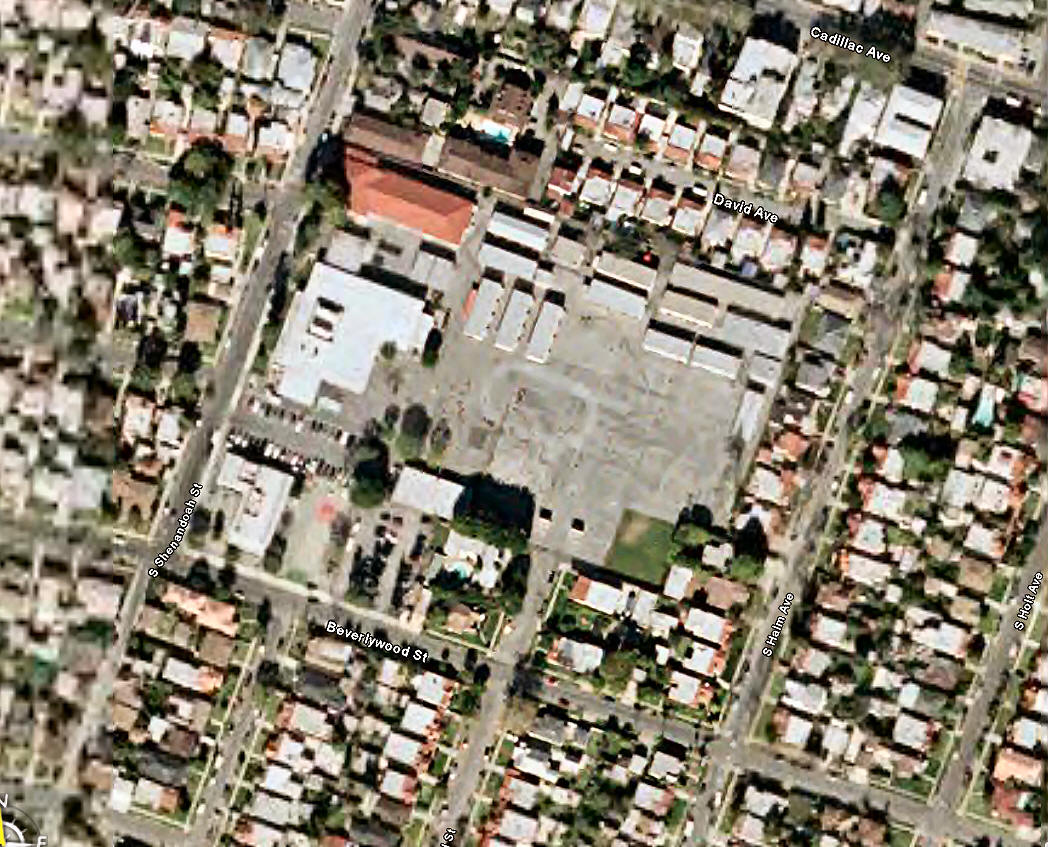
The school is still there but a lot has changed!
Walking Home Was An Adventure
I got to walk home in the 5th grade. It was quite an adventure to walk from school clear across La Cienaga and Venice Boulevards! I am sure now that Mom worried about me since Pete Perkins died on the very intersection I had to cross a few years earlier. We had to grow up. I do remember looking both way several times before going across the intersection!
The Corner Candy Store
Right around the corner for Shenandoah was a small market and of course they had penny candies. It was a market but about the size of our living room. Groceries, fruit, veggies, and of course, candy! That is where I was first introduced to PEZ.
PEZ is the brand name of an Austrian candy, the pocket mechanical dispensers for such candy, and an abbreviation of PEZ Candy Inc. The candy takes the shape of pressed, dry, straight-edged blocks (15mm (3/8 inch) long, 8mm wide and 5mm high), with PEZ dispensers holding 12 pieces of PEZ candy.
The name PEZ was derived from the letters from the first, the middle and the end of the German word for peppermint, Pfefferminz, the first PEZ flavor. PEZ was originally introduced in Austria, later exported, notably to the U.S., and eventually became available worldwide. The all-uppercase spelling of PEZ echoes the trademark's style of type on packaging and the dispensers themselves, drawn in perspective and looking as if the letters were built out of 44 brick-like PEZ candies (14 bricks in the P and 15 in each of the E and Z).
Despite the widespread recognition of the PEZ dispenser, the company considers itself to be primarily a candy company, producing over 3 billion candy bricks each year in the U.S. alone. PEZ Dispensers are part of popular culture in many nations. Because of the large number of dispenser designs over the years, PEZ dispensers are collected by enthusiasts.
PEZ was first marketed as a compressed peppermint candy in Vienna, Austria. The candy was invented in 1927 in Vienna by a confectioner named Eduard Haas III. Haas invented peppermint candies using family owned baking powders, and decided to serve the mints in small, hand-size containers. He manufactured a small tin to hold the mints, similar to the modern Altoids tins. The first PEZ mint dispensers, known as "regulars," were similar in shape to a cigarette lighter, and dispensed an adult breath mint marketed as an alternative to smoking. They were invented by Oscar Uxa. Haas Food Manufacturing Corporation of Vienna, Austria, was the first to sell PEZ candies.
World War II slowed marketing and production. In 1945, manufacturers devised and promoted the PEZ Box Regular. In 1952 Eduard Haas introduced his product to the United States, and Curtis Allina headed PEZ's U.S. business. In 1955, the PEZ company placed heads on the dispensers and marketed them for children. Santa Claus and Mickey Mouse were among the first character dispensers. Since 1950, over 550 different PEZ dispensers, including the original character dispensers have been created.
Playing Red Rover On Cold Winter Mornings
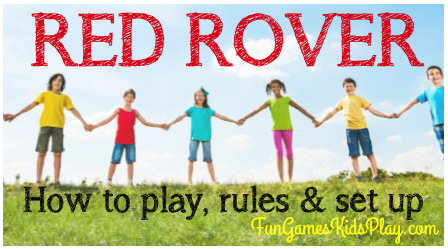
Red Rover the game (also known as Bullrush; Forcing the City Gates; Octopus Tag; and British Bulldog) is an outdoor game played primarily by children on playgrounds. "Red Rover" was very popular into the 1970s.
The game starts when the first team (usually the East or South team) calls out, "Red rover, red rover, send [name of player on opposite team] right over."
We would play in the early mornings and sometimes the fog was so thick we could hardly see each other, making the game even more interesting.
The immediate goal for the person called is to run to the other line and break the chain (formed by the linking of hands). If the person called fails to break the chain, this player joins the team which called "Red rover." However, if the player successfully breaks the chain, this player may take his/her pick of either of the two "links" broken by his/her successful jaunt. This unfortunate broken link then joins the team that had been called out. The other team then enjoys the opportunity and challenge of calling out "Red rover" for a player on the first team, and so on.
The ultimate goal for this game is for one long super-chain to be formed, thereby creating a symbiotic relationship amongst all the players. Ultimately, there are no losers in Red rover because a communal whole greater than the sum of its parts has been created, and some time has been spent in a collegial fashion amongst the diverse participants.
It should be noted that the east-west and north-south configurations are not hard and fast rules, so long as the participants are in agreement and form two lines approximately parallel to one another. In fact, given the relative absence of compasses or similar tools among likely players (small children) or even the adults charged with supervising said play, the alignment of the teams could fall along any points of the compass without violating any known regulatory authority.
The distance between the two lines is also subject to variation, but tends to fall within about 30 feet.
"Red rover" was very popular into the 1970s, but with the invention of other forms of entertainment for children (deriving mainly from electronic devices such as television and video games), the game has declined in its popularity and is primarily played on school or playgrounds, where such modern devices are not present.
Sneaking Into The Dungeon

It kept the rntire campus warm
The dungeon was the boiler room where heat for the school was generated. It was obviously down stairs and there was a sign on the stairway.
Do Not Enter". We dared each other on who would go down the most stairs and return in a single piece. We were not afraid, after all we were almost eleven years old!
We would start down the stairs and someone would yell, "Teacher" and we would run back up the stairs.
I never did see what was in the room but I know the janitor lived down there and the school was always warm!
A mechanical room or a boiler room is a room or space in a building dedicated to the mechanical equipment and its associated electrical equipment.
Unless a building is served by a centralized heating plant, the size of the mechanical room is usually proportional to the size of the building.
A small building or home may have at most a utility room but in large buildings mechanical rooms can be of considerable size, often requiring multiple rooms throughout the building, or even occupying one or more complete floors.
Walking The Fence
On the west side of the school was a large fence about four thick separating the kindergarden from the grades one through six/ We would jump up on the wall and walk until caught be a teacher and then scramble down and run away hoping not to be caught!
Patty Cooper
Probably my first real "girl fiend". Patty was a freckled faced red head just a cute as can be. We used to go to movies together, my mother would drive us. Many times I would walk her home from school which was quite a distance (in fact, I had to retrace my steps about two miles to go to my home). I lost track of her in High School but I do remember he brother was a ham radio operator. PAtty is next to me (naturally) in the center of the second row!

May Day

Every year we would celebrate May Day by wrapping crepe paper around he may pole. May Day was also celebrated by some early European settlers of the American continent. In some parts of the United States, May Baskets are made. These baskets are small and usually filled with flowers or treats and left at someone's doorstep. The basket giver would ring the bell and run away. The person receiving the basket would try to catch the fleeing giver. If they caught the person, a kiss was to be exchanged.
Modern May Day ceremonies in the U.S. vary greatly from region to region and many unite both the holiday's "Green Root" (pagan) and "Red Root" (labor) traditions . Among the largest is the May Day Parade and Pageant created by In the Heart of the Beast Puppet and Mask Theatre, an event that has happened every year since 1974 in Minneapolis and now attracts some 35,000 people.
Drop And Cover Drills
The atomThe atomic bomb age was upon us so we had drop drills all the time. After the Soviet Union exploded its first atomic bomb in 1949, the American public was understandably nervous. They were aware of the destruction that individual atomic bombs did to the Japanese cities of Hiroshima and Nagasaki. But the general public did not know a lot yet about the dangers of radiation and fallout.
So, a new Federal Civil Defense Administration (FCDA) was set up in 1951 to educate – and reassure – the country that there were ways to survive an atomic attack from the Soviet Union. They commissioned a university study on how to achieve "emotion management" during the early days of the Cold War.One of their approaches was to involve schools.
Teachers in selected cities were encouraged to conduct air raid drills where they would suddenly yell, "Drop!" and students were expected to kneel down under their desks with their hands clutched around their heads and necks. Some schools even distributed metal "dog tags," like those worn by World War II soldiers, so that the bodies of students could be identified after an attack.The next logical step was to promote these "preparedness" measures around the country, and the FCDA decided the best way to do that was to commission an educational film that would appeal to children.
In 1951, the agency awarded a contract for the production to a New York firm known as Archer Films.Archer called in teachers to meet with them and got the endorsement of the National Education Association. An administrator at a private school in McLean, Virginia, mentioned that they had participated in the "duck and cover" drills. That was the first time the producers had heard the drills called that, and they thought the phrase would work as a title.